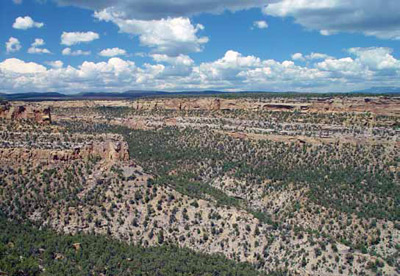More Mismanagement of the Public Lands by Trump’s BLM

The West is rapidly changing due to climate change. That includes an expansion of the piñon-juniper forest at the desert’s edges. So in the lands managed by the Bureau of Land Management, the government is seeking to eliminate thousands of these trees that live in very sensitive ecosystems in incredibly destructive ways without really even understanding what the heck is going on in the West.
The BLM is proposing three projects spanning 1,021 square miles of Grand Staircase. Just decades ago, underneath the soaring ruddy-red, chalky-white, and milky-caramel cliffs of the monument, botanists discovered an 800-year-old pinyon pine and several plants known to exist only in this area cradled by 250 million years of geologic time.
“Species are present in these desert ecosystems that we didn’t know existed,” says Carolyn Shelton, a former assistant manager at the monument, home to the second highest diversity of bee species in North America, including 49 species previously unknown to science discovered in the last five years.
“The eggs of those wild bees are in the soil, and seeds from a rare plant or flower are in the soil. Sometimes it takes up to a decade for precipitation to be just right so that seed germinates and that bee hatches and is present so it can pollinate that flower,” adds Shelton, who retired in 2016 after 30 years with the BLM.
Heavy equipment use on fragile desert landscapes threatens to escalate erosion, encourage flammable invasive species, and destroy biomes already compromised by climate change, scientists say. Archeologists found the earliest evidence of wild potato use in North America near Grand Staircase, where less than 10 percent of the ground has been surveyed. In Utah, such projects endanger irreplaceable cultural artifacts and fossils that remain buried and unmapped.
The BLM also plans to use chaining—a controversial practice in which two bulldozers drag an anchor chain that upends everything in its path—to fell trees in Grand Staircase, even though its own management plans found the method irreparably harms the landscape. Research funded in part by the federal government determined such treatments imperil the pinyon jay, whose population has plummeted 85 percent since 1970.
Pinyon-juniper is the most common—and least understood—forest in the Southwest, where about 100 million acres of it carpets 10 states. The debate over whether the trees are “invading” the ailing sagebrush steppe escalated after President Trump issued an executive order in December for increased logging in U.S. forests and vegetation management on public rangelands to curb deadly wildfires. The order allows federal agencies to accelerate such projects by limiting environmental review and public input.
That the more damage that is done, the easier it is to push road building, logging, and oil and gas development is not a coincidence. This is a perfidious scheme executed with maximum ecological destruction.


